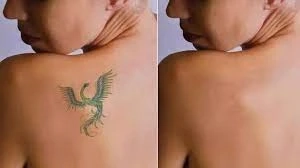Tattoos have been an integral part of human culture for centuries, serving as symbols of personal identity, beliefs, and creativity. However, as the dynamics of life change, so do our preferences and perceptions. What once felt like a meaningful and permanent decision might later become a source of regret or inconvenience. This is where the art of tattoo removal in Abu Dhabi comes into play, offering individuals the chance to rewrite their skin's narrative.
The Evolution of Tattoo Removal Techniques
Tattoo removal techniques have come a long way from the days of crude abrasion or painful skin grafting. Early attempts often resulted in scars, infections, and excruciating pain. Thankfully, advancements in medical science and technology have paved the way for safer and more effective methods.
1. Laser Tattoo Removal: Today, laser tattoo removal stands as the gold standard in the industry. This non-invasive procedure uses high-intensity laser beams that target the tattoo pigment. The laser's energy breaks down the ink particles into smaller fragments, which are gradually eliminated by the body's immune system. Over a series of sessions, the tattoo fades until it becomes barely perceptible or completely disappears.
2. Intense Pulsed Light (IPL) Therapy: Similar to laser removal, IPL therapy employs broad-spectrum light pulses to target tattoo pigments. However, it's often considered less effective than lasers, particularly for darker skin tones and stubborn pigments.
3. Surgical Excision: In cases where the tattoo is small, surgical excision might be considered. This involves cutting out the tattooed skin and stitching the surrounding skin together. While this method offers immediate results, it's more invasive and likely to result in scarring.
4. Dermabrasion and Chemical Peels: These methods involve scraping or peeling away layers of the skin to remove the tattoo ink along with the upper layers of the dermis. While they were once common, they've fallen out of favor due to their potential for scarring and incomplete removal.
The Factors Influencing Removal Success
Tattoo removal is a complex process influenced by various factors, including the size, color, depth, and age of the tattoo, as well as the individual's skin type, health, and commitment to aftercare. Professional tattoo artists and clinics play a crucial role in assessing these factors and tailoring a removal plan accordingly.
1. Tattoo Color: Black and dark blue inks are generally more responsive to laser removal, while lighter colors like yellow and green can be more challenging to eliminate.
2. Tattoo Age: Older tattoos are often easier to remove because the ink has naturally started to break down over time.
3. Skin Type: Darker skin tones are more prone to pigmentation changes and scarring, so it's important for those with diverse skin tones to consult with experienced professionals who can adjust the treatment accordingly.
4. Aftercare: Proper aftercare is vital to minimize the risk of complications. Patients are usually advised to avoid sun exposure, keep the treated area clean, and follow any other instructions provided by the practitioner.
The Emotional Journey
Tattoo removal isn't just a physical process; it's an emotional one as well. For many individuals, tattoos carry deep personal meanings, and the decision to remove them can be accompanied by feelings of loss, regret, or a desire for a fresh start. It's essential for medical professionals to acknowledge these emotions and provide a supportive environment for patients throughout their removal journey.
Looking to the Future
As technology continues to evolve, it's likely that tattoo removal methods will also advance. Researchers are exploring new techniques, such as targeted nanoparticles that could selectively break down tattoo pigments, potentially making the process more efficient and less painful.
In conclusion, the art of tattoo removal has transformed significantly over time, offering individuals a chance to undo what they once thought was permanent. With advancements in laser technology and medical knowledge, the process has become safer, more effective, and less painful. As society becomes more accepting of changing personal narratives, the art of tattoo removal will likely continue to play an important role in helping individuals rewrite their stories on their own skin.


